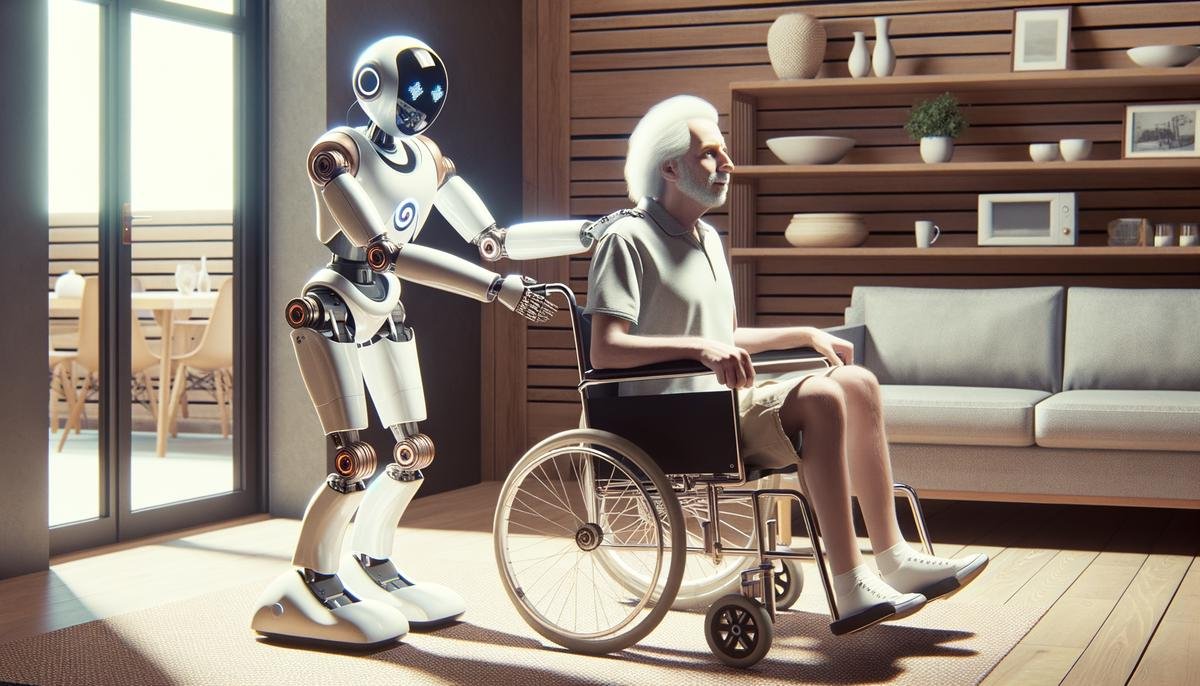AI Tools for Visual Impairments
Computer vision tools like Microsoft's Seeing AI provide digital assistance, converting images into descriptions. While not perfect, especially with complex images, it's a significant advancement. Text-to-audio conversion transforms written content into spoken words, with apps from major tech companies offering narration of digital content. Image enhancements, such as automatic contrast adjustments, help users with low vision interpret images.
However, these AI applications face challenges, particularly in generating accurate alt text for complex visuals. For instance:
- Microsoft Edge, Amazon, and Google Chrome can auto-generate alt text for simple images
- They struggle with complex scientific images
- ChatGPT 4 shows promise in understanding and describing complex images
Real-world examples demonstrate AI's potential to aid those with visual impairments while highlighting areas needing refinement. The trajectory is positive, but ongoing innovation is required to fulfill its potential seamlessly.
AI Solutions for Hearing Impairments
Speech recognition tools, like Apple's Siri, convert spoken words into text, helping those with hearing challenges follow conversations and spoken information. AI-generated captions provide immediate text for audio content, improving accessibility in real-time. Audio quality enhancement tools work to separate speech from noise, giving those with hearing impairments a clearer auditory experience.
These tools face challenges with:
- Accents
- Background noise
- Rapid speech
Accuracy in transcription and the ability to handle complex audio environments are critical improvements needed. As AI evolves, these technologies move closer to becoming reliable aids in daily soundscapes.
AI in Mobility and Cognitive Assistance
Voice control enables hands-free access to digital devices and information for individuals with mobility impairments. AI-powered voice assistants turn spoken commands into actions, allowing users to interact with their environment effortlessly. AI's ability to generate personalized content is transforming cognitive assistance, creating educational or entertainment experiences that are more engaging and digestible.
Humanoid robots are emerging as aids capable of social and physical interaction, assisting with daily tasks and offering cognitive support. While impressive, there's still a gap between theoretical promise and practical execution in areas like social interaction and adaptability.
"AI is there to help you cross new boundaries, but you don't go it alone … you take the information back to your health team and discuss what you're learning."
Future developments in AI for mobility and cognitive assistance suggest improvements in understanding diverse human behavior and subtle speech patterns, moving closer to enhancing everyday experiences effectively.

Challenges and Ethical Considerations
AI algorithms face inherent biases, potentially leading to misjudgments concerning people with disabilities. Inclusive design is crucial, involving diverse voices in the development process to ensure AI tools are accessible and beneficial to all.
Regulations and standards play a vital role in establishing guidelines for equitable access. However, they must evolve alongside technology to anticipate emerging ethical challenges. The ideal regulatory approach balances thorough oversight with room for innovation.
The goal is to develop AI that improves accessibility without compromising ethics, functioning well in complex real-world scenarios. By prioritizing inclusivity and ethics, we aim for technology that enriches every individual's experience.
Future of AI in Accessibility
Emerging trends in AI indicate a future where accessibility is part of the mainstream conversation. Integration of generative AI with real-time data could create more intuitive and responsive systems. Research is exploring AI's abilities to understand complex human emotions and interactions, aiming for systems that offer empathetic engagement.
Collaboration between AI developers, policymakers, and the disability community is essential for developing technology that resonates with its users. Technologies such as real-time language translation for native and sign languages are on the horizon.
The focus is on comprehensive empowerment, unlocking opportunities for individuals of all abilities. With each advancement, we approach the goal of an inclusive digital environment where technology enhances human connection and accessibility is a built-in promise.

As AI continues to advance, its role in accessibility becomes increasingly significant. The journey is one of gradual progress, bringing us closer to a world where technology serves as a powerful ally for all individuals, enhancing their daily experiences and opportunities.
- Zhou H, Hunter SI. AI and accessibility: Here and now. The Scholarly Kitchen. 2023.
- Henneborn L, Daugherty P. Humanoid robots: Pioneering a new era of inclusive AI. Harvard Business Review. 2024.
- Gilbride K, Mathis J. EEOC and DOJ announce commitment to technological equity for people with disabilities. U.S. Equal Employment Opportunity Commission. 2023.
- Glazko K, Yamagami M, Desai A, et al. AI accessibility tools: A mixed bag for people with disabilities. University of Washington News. 2023.



